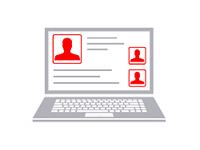

|
"Line-of-business leaders everywhere are bypassing IT departments to get applications from the cloud and paying for them like they would a magazine subscription. And when the service is no longer required, they can cancel that subscription with no equipment left unused in the corner.
"
- Daryl Plummer, Gartner analyst
|

|
Software as a service (SaaS) is growing as a paradigm for delivering applications and services over Internet (cloud).
This eliminates the hassle of installing and updating software components internally.
The provider of the application manages the access to the application, including security, availability, and performance.
SaaS is agile, as it reduces the time taken from the purchasing decision to the solution going live.
In also ensures a high degree of adaptability in most cases as it allows for infrastructure cost saving (traded off for licensing fees),
up-to-date hardware and software technology, rapid deployment, prototyping, quicker deployment cycles,
and the flexibility of scaling.
There are, however, scenarios where corporations may require tighter ownership of their data and other intellectual assets.
Latency (due to remote internet location) may also be less-than-optimal for applications
requiring very quick turnaround, especially on a shop floor or in certain office intranet configurations.
Loss of some control over real-time data may also be a concern in a minority of situations.
It is, therefore, important to map out the exact needs, gaps and risks.
The service provider's reputation and strengths, and the service level agreement
are also important criteria to consider.
To the last point, with more and more vendors positioning their products as services,
it becomes important to have a consolidated means of access all these services.
SaaS Integration Platform (SIP) facilitates access to multiple services through a common, standard platform.
Software as a service is evolving and expanding to incorporate more and more services
to cater for increasing business functions and industry segments.
Project management, office productivity, departmental software, analytics, collaboration, user verification,
and electronic signatures are some of the many services that are now delivered through the cloud.


© Copyright 2003-2018 Adaptive Enterprise Inc. - All Rights Reserved
|



